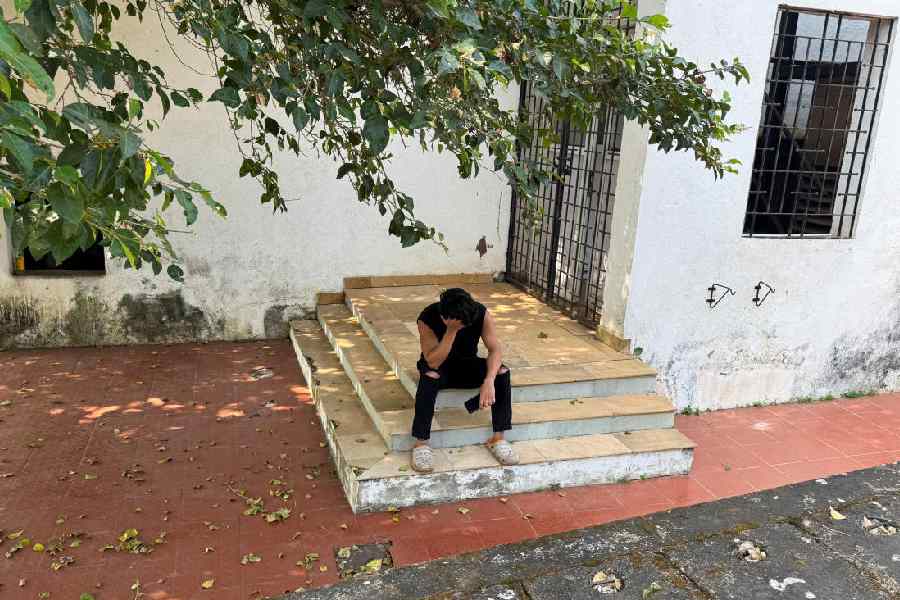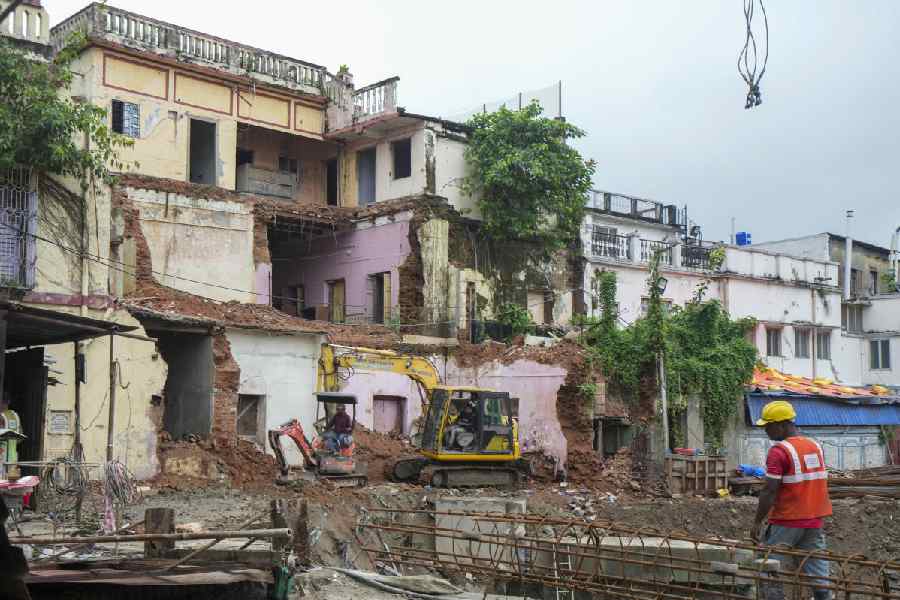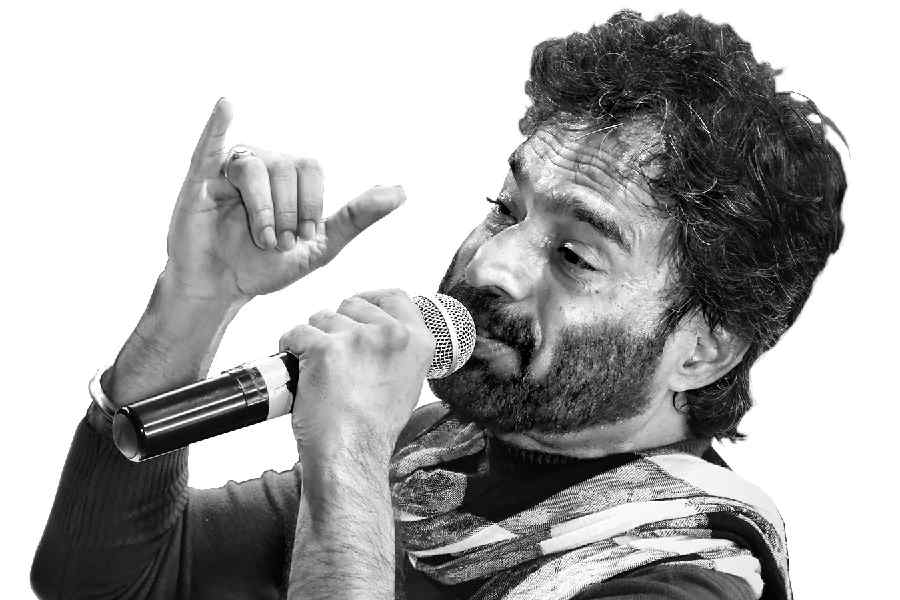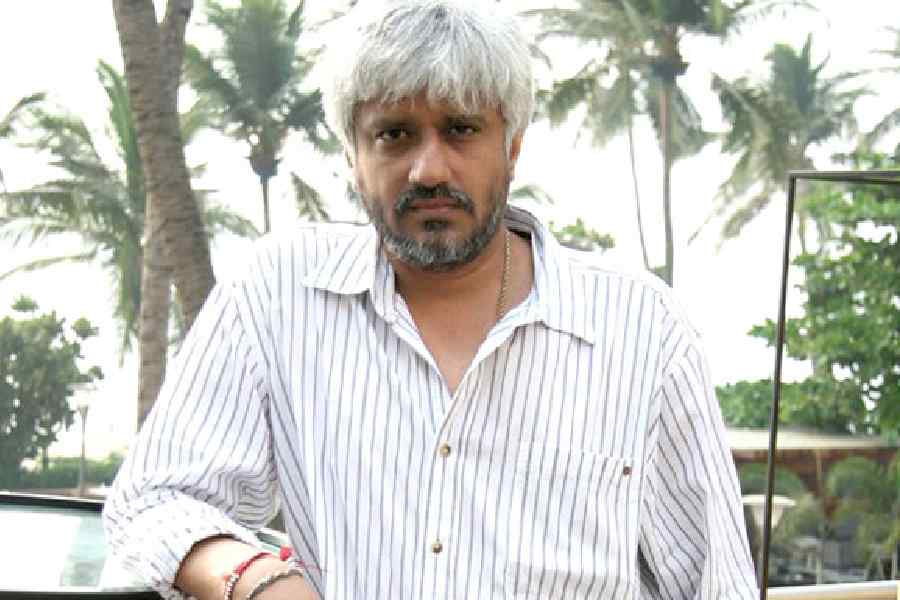.jpg) |
.jpg) |
.jpg) |
.jpg) |
.jpg) |
.jpg) |
| (From top) The empty halls of S.C. Roy’s personal library-cum-museum on Church Road, Ranchi; A picture of the Father of Indian Ethnography found in his library; The room housing copper weapons and tools such as bows and arrows, broom-sticks, bamboo baskets, armours and axes, all believed to be nearly 200 years old; Roy’s library-cum-museum stands neglected and forgotten; Stones and the shiv-linga excavated from Khunti are a major attraction of Roy’s museum; P.C. Roy, the grandson of S.C. Roy, who looks after the museum now. Pictures by Hardeep Singh |
Amid the chaos on the dusty Church Road, it is not easy to locate the house which, not too long ago, was visited by anthropologists from India and abroad as a matter of routine. It was a pilgrimage that became a part of their visit to Ranchi. Research scholars took written permission from the postgraduate head of anthropology to visit the house, located close to the Lower Bazar police station, at the corner of Fateullah Lane, at least once. Many of them returned later to browse through books and inspect more closely the objects collected by someone who is known as the “Father of Indian Ethnography”.
Sarat Chandra Roy was born on November 11, 1871 in Manikpur (Khulna district in Bangladesh). The house he built in Ranchi is exactly 100 years old and his private museum was built up through the years till he passed away in 1942. His youngest daughter, Mira, looked after the collection till she herself died in February last year. Now a grandson, P.C. Roy, visits the house once every week to do the dusting.
The family, explains the high court advocate, had asked for a reasonable price for handing over the collection to the state government-run Tribal Welfare Research Institute. But there has been no response from the government so far.
The museum has practically closed down after Mira Roy’s death. But neither Ranchi University (RU), which benefited enormously from the collection, nor the state government has bothered to conserve the collection.
Indeed, Roy has been forgotten quite fast. There is not even a chair in his name and no attempt has been made to preserve his heritage and the house.
Roy was the first curator of Patna museum and was appointed by the then Governor Edward Gait. The 100-year-old house in Ranchi was built by Roy in 1907. The bungalow, with eight rooms, not only houses Roy’s collection of over four thousand books but it is also a storehouse of objects, tools, weapons, household goods and whatever else he could pick up during his visit to tribal villages. One of the rooms is adorned with traditional weapons on the wall.
In a room behind Roy’s study-room, are huge stones excavated by him around Khunti. The shiva-linga excavated again from Khunti is in another room. One of the major attractions of the museum are the stone and copper weapons and tools of different kinds, shapes and sizes. A variety of bows and arrows, broom-sticks, bamboo baskets, sickles, armour and axe, besides furniture and lamps believed to be 200 year-old, are the other big draws.
It was deemed to be the best personal library-cum-museum related to anthropology and sociology in the country. Indeed, till 1956 the collection found regular mention in reports and journals brought out by the Patna Museum.
My grandfather collected plenty of stones and statues from Khunti and even Orissa. But he never tried to either promote himself or make a killing by selling his collection. His daughters knew this very well and therefore they too never tried to dispose the collection or make money out of it,” recalls the grandson.
But the museum needs to be looked after properly and though he tries to clean it up once a week, it is clearly not enough.
His grandfather, recalls the lawyer, was touched by the exploitation of tribals even in those days. He desperately wanted to communicate with the tribals he met and, therefore, learnt both Mundari and Kurukh, the dialect spoken by Oraons, in less than six months.
When in Ranchi, S.C. Roy devoted three weeks to his legal practice while the remaining week of the month was devoted to his travels and quest for understanding the tribal ways of life. It took him 12 years of rigorous research before his first and acclaimed book The Munda and their Country was first published in 1912.
The priceless collection does not appear to be insured either. If they have remained untouched by vandals and fortune-hunters till now, it is largely due to ignorance about the actual value of the collection. But with nobody trying to do a professional valuation, appoint a custodian or to preserve the collection better, it is anybody’s guess how long it would take for it to disappear.
A museum of tribal life has rich possibilities. And it might be a good idea to combine the collections at Church Road and the ones at the Tribal Welfare Research Institute and then add to the lot. A spacious and modern museum will draw visitors and students and serve to highlight and even preserve the tribal lifestyle and customs.
Will the Raj Bhavan bell the cat ?

.jpg)









